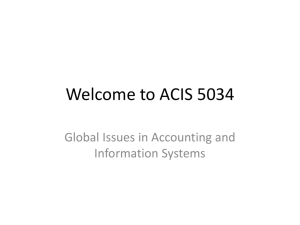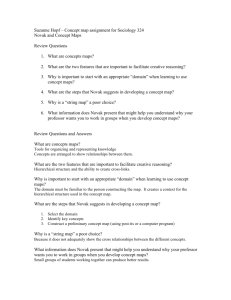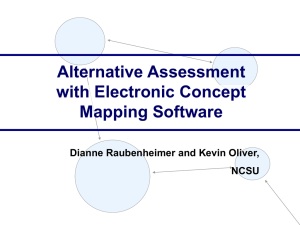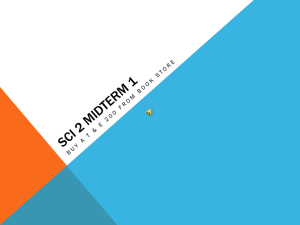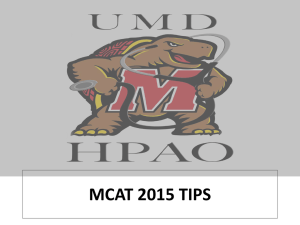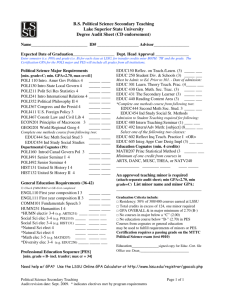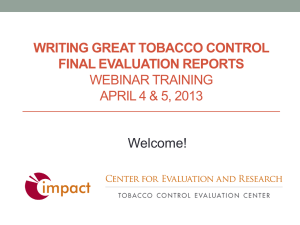Embedded Tools - the Biology Scholars Program Wiki
advertisement
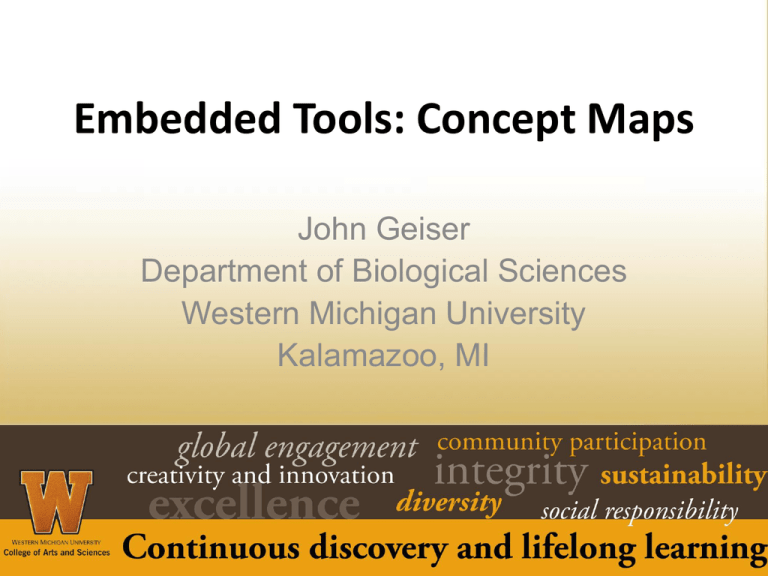
Embedded Tools: Concept Maps John Geiser Department of Biological Sciences Western Michigan University Kalamazoo, MI Embedded Tools Best of both worlds. • Class assessment and Research assessment. Assessment can be the same for both or different. • Generally better if different (personal opinion) • Gets rid of bias of teaching to the test Examples Concept Mapping Writing Assignments Just about any tool What is a concept map? Concepts – terms, ideas, phrase, concepts Usually 1 to 2 words Represented visually by shape with concept inside Tree Brown Bark Green Root Leaf What is a concept map? Proposition – phrase giving meaning and showing connection between concepts Represented visually by directional arrow Longer propositions are generally better is Tree is has method of collecting water and water soluble matter needed for growth Root has Brown Bark Green Leaf Practice a Concept Map Take blank piece of paper. Identify 6 concepts related to your SoTL project. Problems, questions, ideas, tasks, etc. Connect concepts with propositions. Few minutes to get it mapped. GO! Scoring a concept map Does your map look like these? If so, time to do more work to get at deeper understanding. Scoring a concept map Two majors approaches 1. Comparison to expert map of subject area. 2. Design and use a rubric to score. (Wallace 1990, Stoddart 2010 has much more involved process and reviews many others) Scoring a concept map Relationships: 1 point Hierarchy: 5 points/level Scoring a concept map Branching: 1 point/branch General to Specific Examples: 1 point Scoring a concept map Cross-Links: 10 points/link My Approach Low stakes, studying tool, freshman intro majors bio, 300+ students Concept Map topic, chapter, etc. 20 concepts as minimum Propositions between concepts (19 minimum) 10 points out of 1000 total Rubric Digital Concept Map 1. Free computer concept map software. http://cmap.ihmc.us/ 2. Free online concept map software. https://bubbl.us/ Many others. Helpful References 1. Allen, D., and K. Tanner, 2003 Approaches to cell biology teaching: mapping the journey—concept maps as signposts of developing knowledge structures. Cell Biol. Educ. 2: 133–136. 2. Good, R., J. Novak and J. Wandersee (Editors), 1990 Special issue: perspectives on concept mapping. J. Res. Sci. Teaching 27: 921–1074. 3. Novak, J. D., 1990 Concept mapping: a useful tool for science education. J. Res. Sci. Teaching 27: 937–949. 4. Novak, J. D., 2003 The promise of new ideas and new technology for improving teaching and learning. Cell Biol. Educ. 2: 122–132. 5. Stoddart, T., R. Abrams, E. Gasper and D. Canaday, 2000 Concept maps as assessment in science inquiry learning: a report of methodology. Int. J. Sci. Educ. 22: 1221–1246. 6. Wallace, J and J. Mintzes, 1990 The concept map as a research tool: Exploring conceptual change in biology. J. Res. Sci. Teaching 27: 1033- 1052.


